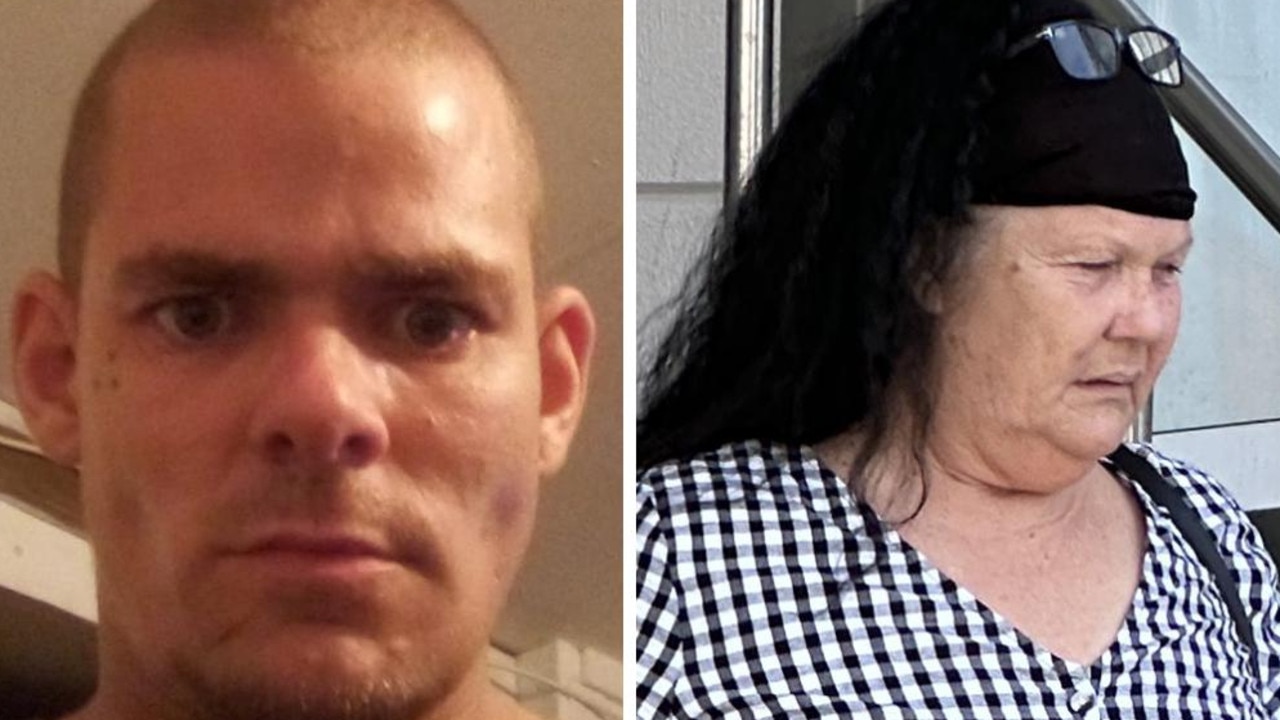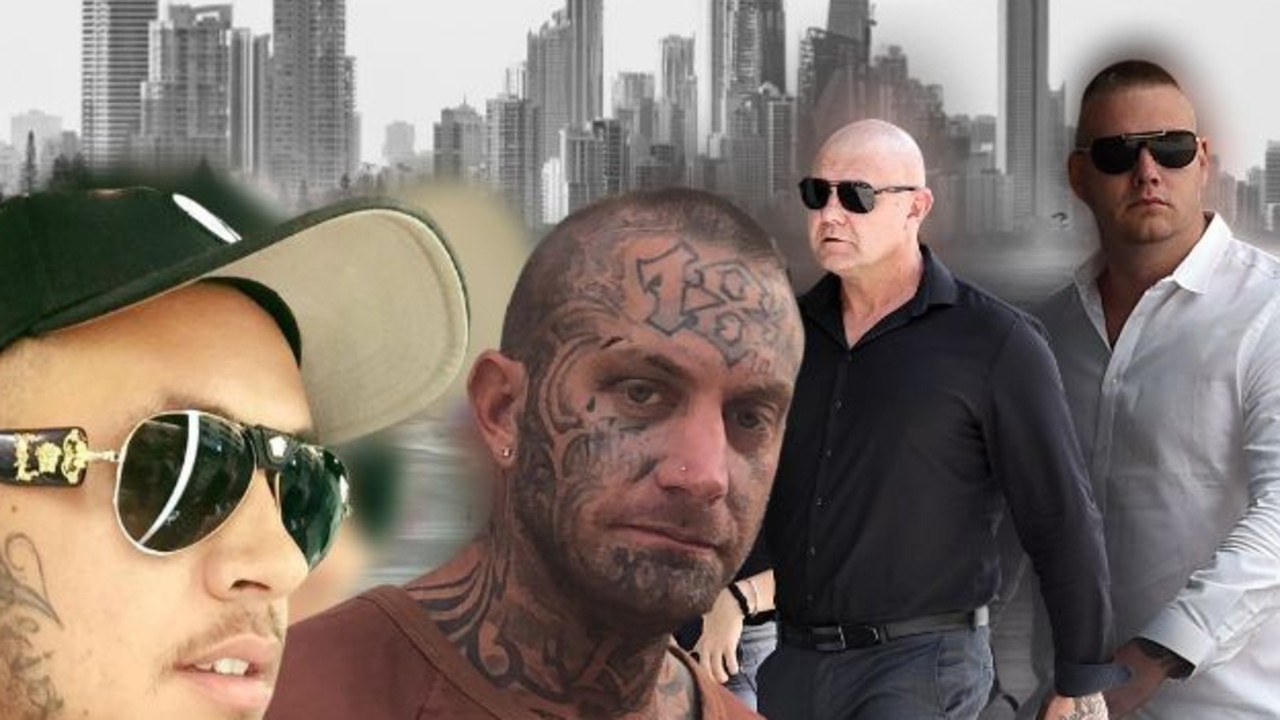Bikies Inc Podcast: Old wounds, Australia’s bloodiest bikie battles
When Australia’s fiercely tribal bikie gangs go to war, there is little love lost. These are some of the bloody battles that have cemented their hatred for each other.
Bikies Inc
Don't miss out on the headlines from Bikies Inc. Followed categories will be added to My News.
They talk about brotherhood. But when Australia’s fiercely tribal bikie gangs go to war, there is no love lost; just bullets, blood and lives.
State laws designed to smash outlaw motorcycle gangs in the cities where they once led an almost-nightly reign of terror have gone some way to disrupting the activities of the country’s organised crime gangs.
But many bikies have sought refuge interstate or overseas, with several key players setting up shop in South East Asia where they have continued to call shots, thousands of kilometres from Australia.
And recent outbursts of violence across the country, particularly in Sydney where the bodies have been piling up, have shown that, as far as the authorities are concerned, bikie gangs are still a force to be reckoned with and are not ready to be consigned to the annals of history just yet.
We take a look at how some of Australia’s most notorious bikie gangs are linked and the bloody conflicts that have either forged loose ties between the groups, or cemented their bitter hatred for one another.
SYDNEY
THE COMANCHEROS
The Comanchero are linked to an ongoing underworld gang war between the Hamze and Alameddine crime families of western Sydney — a brutal war that has so far claimed the lives of 13 people in just 18 months.
As The Daily Telegraph reported in June, the war between the two families intensified when the Alameddine clan muscled in on Hamzy territory for a piece of the lucrative trade market.
As the paper reported, the Alameddine family became an organised crime superpower around 2020 when it aligned itself with the Comanchero.

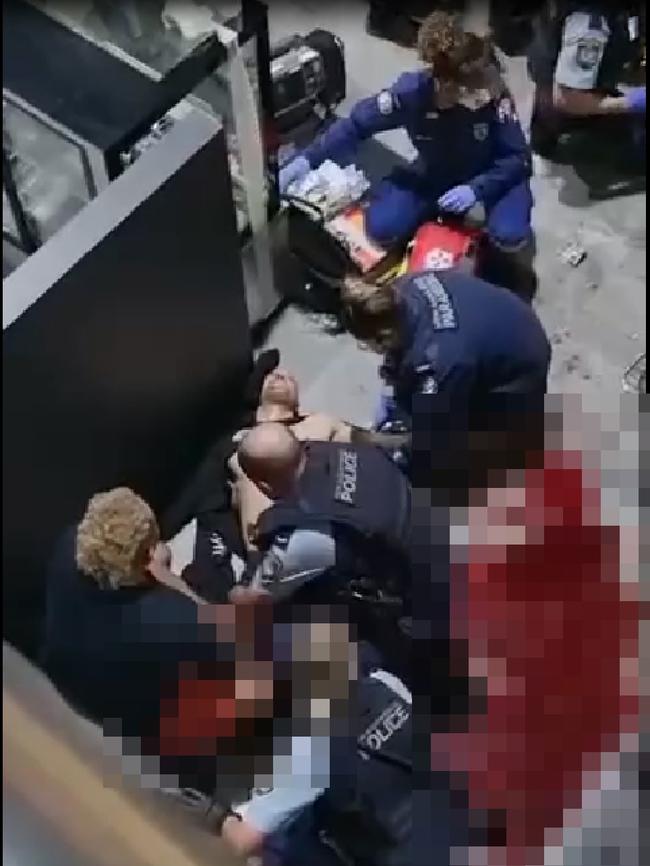
Initially, police sources say, the family acted as muscle for the gang, but soon established their own drug distribution networks.
The current gang war escalated again with the attempted assassination of Comanchero sergeant-at-arms Tarek Zahed at a Sydney gym in May, 2022. Zahed miraculously survived the hit attempt, despite being shot 10 times, but his brother, Omar was killed in the attack.
DLASTHR V TRUE KINGS
Sydney is also home to several other beefing, but perhaps lesser-known organised crime gangs such as DLASTHR (The Last Hour) and the True Kings.
Both groups are believed to have originated from The Assyrian Kings, which, according to The Daily Telegraph, had a brutal reputation in Sydney’s south west since the 1990s.
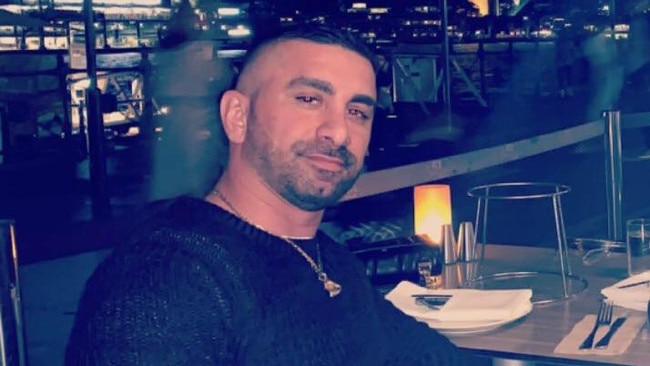
Several shootings and fire bombings have been attributed to clashes between the groups over territory and drugs in Fairfield and broader southwest Sydney.
True Kings member Amar Kettule, 34, was shot dead in a car in Fairfield in January 2021.
No one has been charged over the killing, which came just weeks after the shooting of DLASTHR member Samer Marcus. Marcus was shot in the head and was left a quadriplegic.
LISTEN TO THE BIKIES INC PODCAST:
QUEENSLAND
THE FINKS V THE HELLS ANGELS
Queensland has seen more than its share of bikie-related violence, dating as far back as 2006 - a year marked by the now infamous “Ballroom Blitz” - a wild brawl at a kickboxing tournament between the warring Finks and Hells Angels at a luxury resort on the Gold Coast.
THE REBELS V THE BANDIDOS
In early 2019, months of rising tensions between the Rebels and their enemies the Bandidos, boiled over with a series of violent attacks that saw Rebels member Gokhan “Pitbull” Turkyilmaz get shot in the groin and bashed with a baseball bat and a tattoo studio owned by another member of the Rebels, “Little” Mick Kosenko, get firebombed.
Senior police attempted to play down the violence between the gangs, despite the then-Opposition leader Deb Frecklington declaring the situation out of control. It was clear, she said, “a bikie turf war is raging on our streets”.
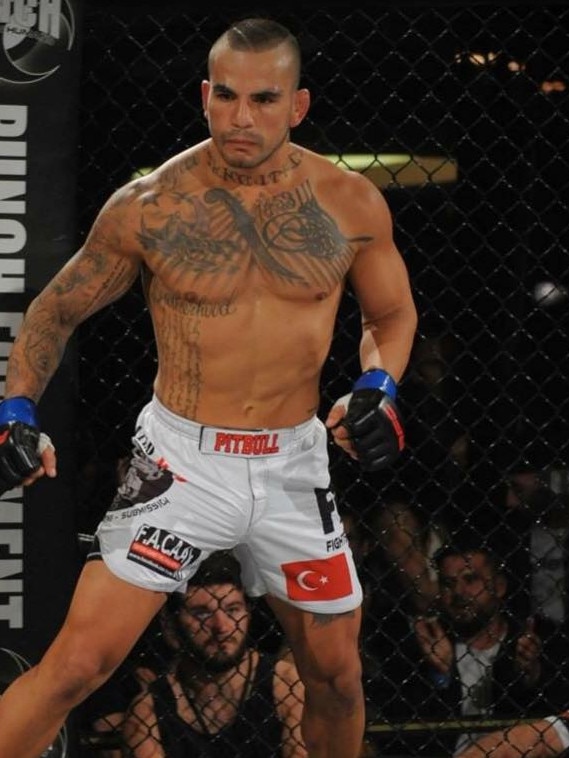

MONGOLS V FINKS
The bloodshed continued in 2020, with the execution of Mongol-turned Fink Shane Bowden in the driveway of his home in Pimpama, just weeks after surviving a drive-by shooting in Melbourne following his release from prison.
Bowden, 47, was shot 21 times shortly after driving his black BMW into the garage of his rented unit. CCTV footage recorded the hit by two gunmen, one of whom was carrying a long firearm.
Bowden was a member of the Finks “terror team”, which was behind the shooting of Christopher Hudson in the infamous “Ballroom Blitz” in 2006.
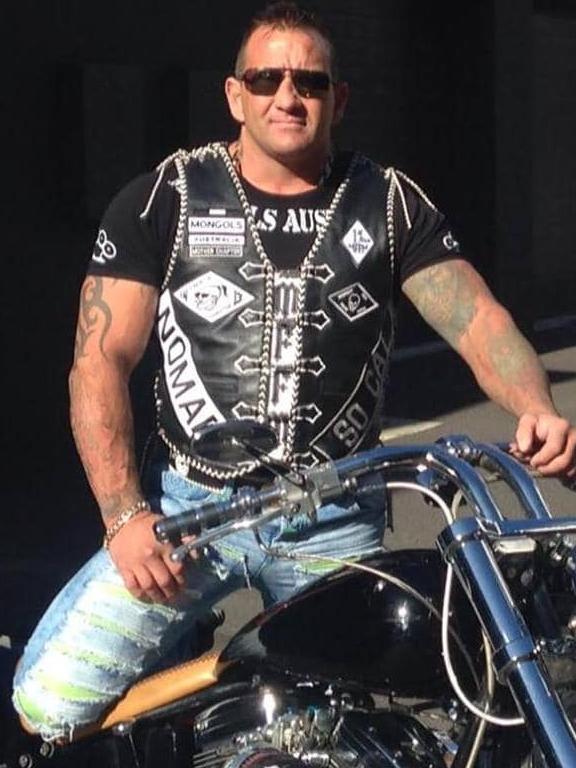
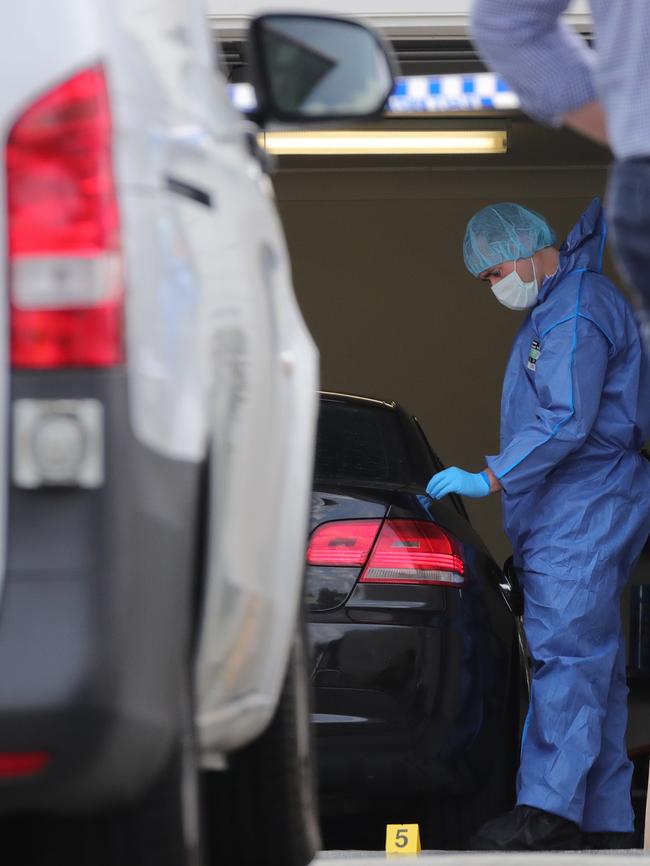
As the Courier Mail reported, in around 2013, Finks from around the country “patched over” to become Mongols but many defected back to the Finks. At the time of his murder, the Finks were believed to be attempting regroup on the Gold Coast.
Ten alleged Mongols members and associates were arrested in police raids in July, 2021 and charged with Bowden’s murder, among them the alleged president of the Brisbane West chapter of the Mongols, Ian Ronald Crowden, then 46.
The lawyer representing those charged, including Crowden, has indicated his clients will fight the charges.
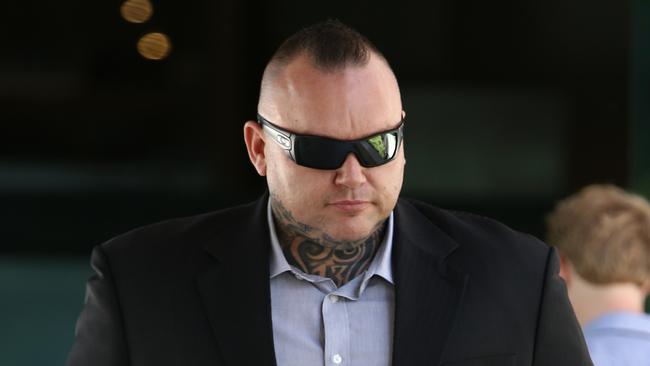
At the time of Crowden’s arrest, police issued a stern warning to anyone else allegedly connected to the crime, urging them to come forward and take advantage of a $250,000 reward and an offer of indemnity from prosecution.
“There’s no loyalty in these gangs,” Detective Superintendent Brendan Smith said at the time.
“They will give each other up at the drop of a hat to protect themselves,” detective Superintendent Smith said.
“Twenty-seven years is a long time to be away from your family.
“It’s time for them to ask if they want to be sitting in a Watchhouse or are they going to help us?”
MELBOURNE
Few Australian cities have had to grapple with a deadlier, more tenacious, more wide-reaching criminal underworld than Melbourne.
More than 30 gangsters were slain in the city’s notorious gangland wars, which raged from the mid-1990s until 2010, when major police task force Purana finally managed to stem the bleeding and the killings stopped.
But as veteran crime reporter Andrew Rule reported in May, there has been a series of “seismic changes” in the leadership of Melbourne’s gangs that could touch off a new gangland war.
One of the forces causing instability in the underworld, Rule writes, was the sudden arrest of alleged crime boss George Marrogi, who was charged with running a criminal organisation from inside prison. Marrogi is defending the charge.
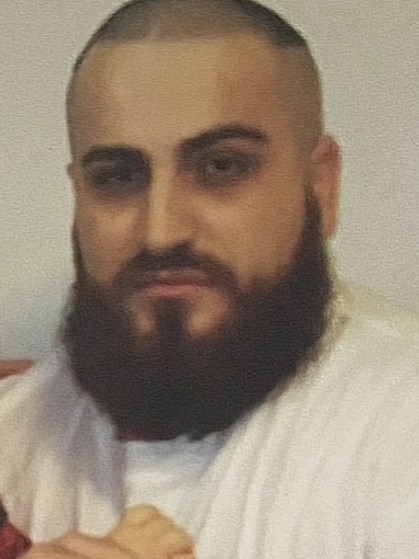
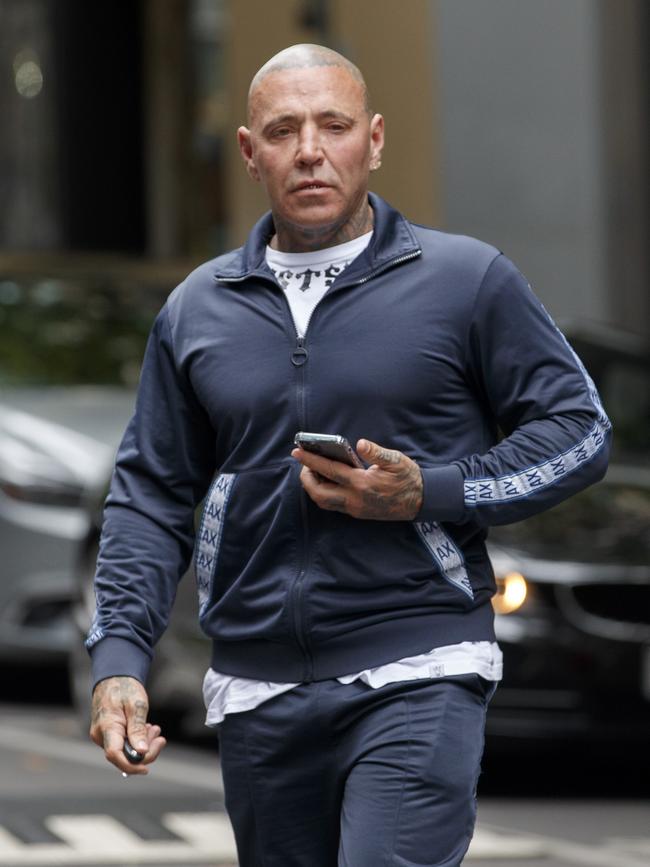
Rule says the taking of Marrogi out of the game, along with the ousting of key members of the Mongols, including Toby Mitchell, in an “apparent purge” by alleged Mongols from Queensland, will leave a “power vacuum” others will be desperate to fill.
The Herald Sun described Mitchell’s ousting as a hostile takeover that shocked some people in the underworld and reported there were numerous theories as to why Mitchell was ultimately giving his marching orders.
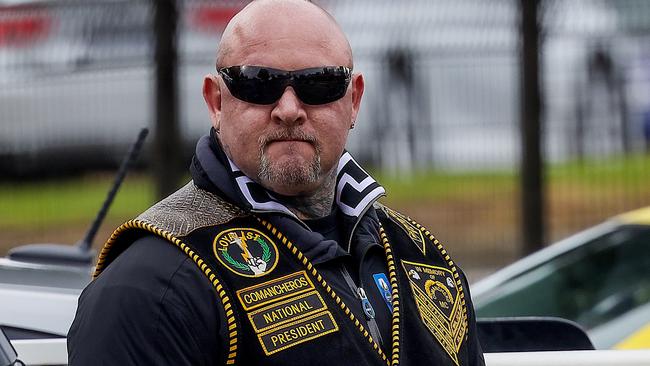
In another major development, in April, national Comanchero boss Mick Murray was charged with the 2019 murder of Mirat Rasimi, raising questions about might step up to seize control.
Murray is defending the charge.
“There is huge potential for the scene to turn very ugly,” Rule wrote.
FINKS V MONGOLS
In July 2021, The Herald Sun reported that police also held fears a bikie war could erupt as the result of an escalating feud between the Finks and the Mongols.
Senior Constable Stacey Keenan, from Victoria’s bikie-busting Echo Taskforce, told the Melbourne Magistrates’ Court the Finks and Mongols had been locked in an ongoing dispute since 2013, when the Mongols instigated a national “patch over” of the Finks.
Sen-Constable Keenan said there was also a “well-publicised hostility” between the rival organisations following the shooting of Shane Bowden on the Gold Coast in 2020, after his defection back to the Finks.
“We’ve got intelligence recordings that the tensions will be filtering down here,” Sen-Constable Keenan said, adding that she feared the public could also get caught in the “crossfire” of any clash between the gangs.
Opposing the release of a senior Finks member, Sione Hokafonu, 27, on bail, Sen-Constable Keenan told the court, police feared Hokafonu might try to target Ali Hussein, a key prosecution witness in the 2019 attempted murder of Mongol Rocco Curra - or get someone else to do it on his behalf.
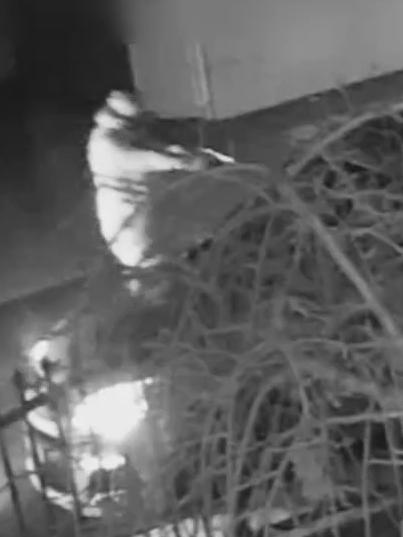
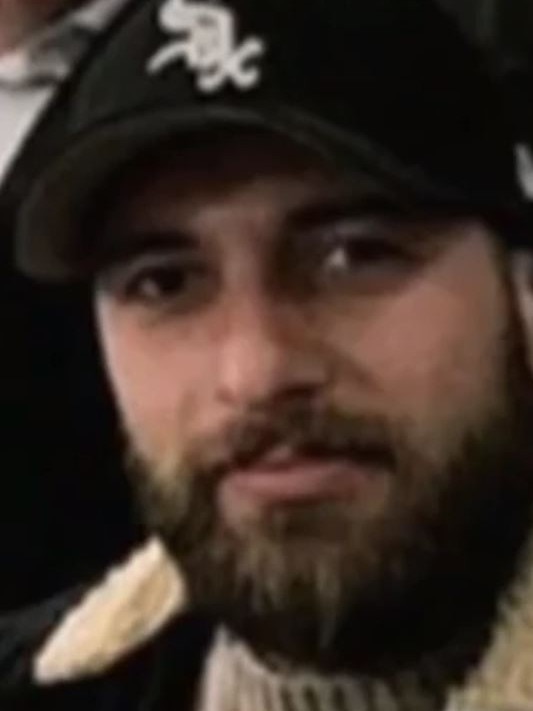
The court heard Hussein was a member of the Finks and was originally charged alongside Hokafonu as being the second shooter who ambushed Curra as he sat in his car in the Melbourne suburb of Bulleen.
It is alleged Curra was lured via a fake Instagram account to a location where he was ambushed.
He survived the shooting but had to have a bullet removed from his brain.
Mr Hokafonu’s lawyer Philip Dunn, QC, said his client would be strongly defending the charges. Mr Hokafonu is currently on bail.
Victorian authorities have another reason to fear a continuation of bikie-sponsored violence.
Some argue the state’s anti-bikie laws are too lenient compared to those in force in other states that prohibit bikies from congregating at clubrooms, associating in public, entering pubs or wearing gang colours, and as a result, bikies have been flooding into Victoria.
In June, The Herald Sun revealed Victoria’s anti-association powers had not been used over the past six years, and that the ranks of the state’s bikie gangs had in fact been growing.
Between 2013 and 2021, bikie membership in Victoria grew from 1200 to 2112.
An experienced former Detective told The Herald Sun Victoria’s anti-association laws were holding the force back from getting on top of the problem.
“It’s safe for them to do their business,” the former Detective said.
Queensland University of Technology Associate Professor Mark Lauchs, a specialist in bikie gangs, agreed Victoria’s laws lacked teeth and that the state would soon see an influx of bikies from Western Australia, where the government was tightening the screws on bikie gangs.
“It is the place to go (Victoria),” Prof Lauchs said. “When laws were changed, all the hardcore bikies left Queensland and went to Melbourne.”
OLD WOUNDS: AUSTRALIA’S BLOODIEST BIKIE BATTLES
1984: MILPERRA MASSACRE
Still regarded as Australia’s worst outbreak of bikie violence, the Milperra Massacre - a vicious brawl between the Comanchero and Bandidos - unfolded in the car park of the Viking Tavern on September 2, Father’s Day, in 1984, in the Sydney suburb of Milperra.
The brawl, involving about 30 members of both gangs, broke out about 1pm during a motorcycle swap meet outside the pub.
According to news reports at the time, those involved came heavily armed with chains, knives, baseball bats and machetes and by the time it was all over, seven people lay dead - six bikies and a teenage girl, innocently selling raffle tickets outside the tavern when all hell broke loose.
The Daily Telegraph’s chief crime reporter, Mark Morri, was sent to the scene that day and told True Crime Australia in 2021 he arrived at the bloody spectacle just hours after it happened.
“I got there and there were still bikies there,” Morri recalled.
“And this was hours after the shooting.
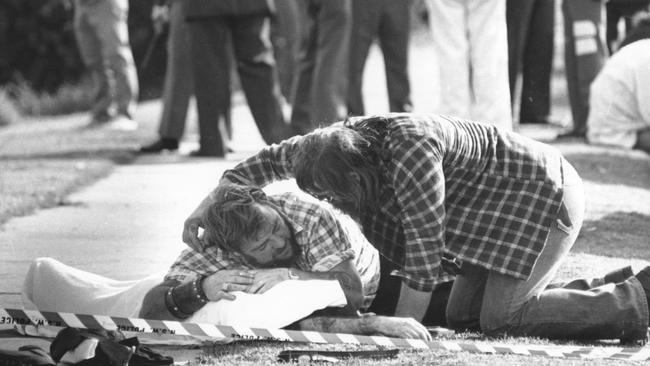
“One Detective took me over to the area and he said ‘this is where the 15 year old was shot’ and you could still see all the blood, there was blood everywhere, all in different patches.”
Elsewhere, bikies were on the ground, mourning their dead.
“You see those iconic photos now of the Campbell brothers, guys lying over their brothers who were dead, bikies riding round and round and the police really having no concept of what they were dealing with,” Morri said.
So what sparked the bloody skirmish?
According to Morri, the Comanchero had split under the leadership of Jock Ross, with several members leaving the club to form the breakaway Bandidos.
“The Bandido guys wanted to move into maybe doing a little bit more drug-dealing,” he said.
“Jock Ross was more of… just let’s ride our motorbikes. He wasn’t a major crim.
But there was the bravado between the two. ‘You guys can’t leave our club’.
“And that’s what started it.
“There was a couple of little shootouts (before the massacre), the odd drive-by going over to the new clubhouse but nothing that would give any indication that it would explode into a full-blown war.

Besides being shocking in its own right, the Milperra Massacre marked a significant moment in Australia’s bikie history.
“It was the beginning of the bikie, it gave a legend to the bikies,” Morri says.
“Up until then they’d just been the free-spirited, dope-smoking, brawling bad boys. But this took them to another level.
‘Bikies were not organised crime then. They were blokes that smoked a bit of pot, got in fights, did a little bit of petty crime. But the whole fight began when the Bandidos wanted to become major organised crime figures.”
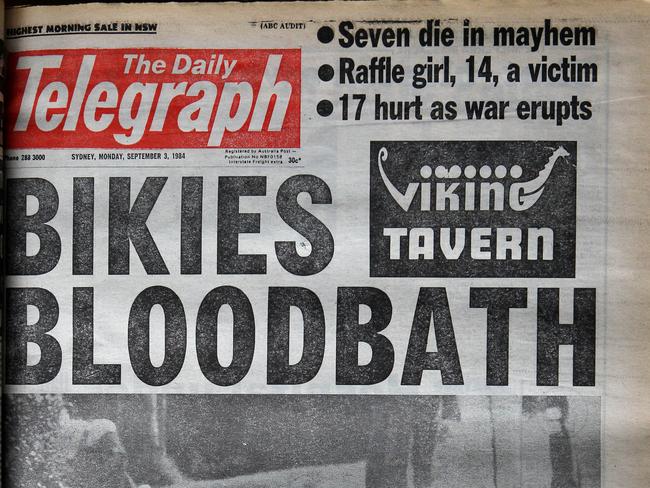
That theory was given credence when it came time to bury those killed in the massacre.
“There was the funerals and I remember the police saying ‘we’ve just pulled over a car, the boot is full of shotguns and pistols’. So they were arming themselves to continue the war,” Morri says.
“It’s a chapter of Australian crime that will hopefully never be repeated”.
2006: BALLROOM BLITZ
“A tornado of flying tables, chairs, knives and bullets”.
That’s how Courier Mail journalist Jeremy Piece described the scene that unfolded in the grand ballroom of a luxury resort on the Gold Coast on March 18, 2006 when a brawl broke out between warring members of the Finks and Hells Angels.
According to the Courier, about 15 Hells Angels were at the venue for a kickboxing tournament and the Finks knew they would be there.

The Finks were looking for payback after former member Christopher Wayne Hudson left the group to join the Hells Angels, who were looking for a slice of the Gold Coast’s drug trade.
Hudson was at the tournament that night and police had received a tip-off there could be trouble. Their information proved correct.
That night, about 43 members of the Finks stormed the ballroom, heading straight for the group of Hells Angels and just moments later, the fight was on.
More than 1000 spectators fled screaming.
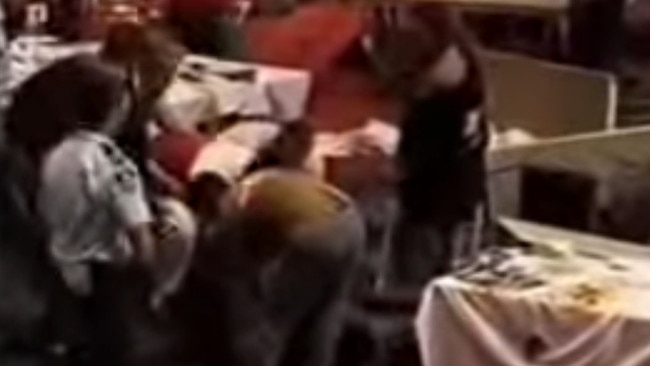
Terry Goldsworthy, Detective senior sergeant in charge of Burleigh Criminal Investigation Branch at the time, had clocked off for the night after spending about half an hour at the venue and witnessing no trouble. Then the phone rang.
“I thought the guys were winding me up because it had been so quiet when we were there,” he recalls. “But it was mayhem,” Goldsworthy told the Courier Mail.
Two uniformed and two off-duty police officers did all they could to restore calm amid the frenzy of fists and bullets and five minutes after it began, the brawl was over.

Five people were injured during the melee. Hudson was shot in the back and jaw by Fink Shane Bowden, while two other bikies were shot and stabbed.
Hudson was also attacked by former-friend Nick ‘The Knife’ Forbes. Forbes and Bowden handed themselves into police about a month after the blitz.
Forbes was given 18-months for assault while Bowden was sentenced to six years’ in prison for his role in the attack. Hudson was charged with affray but the case was dropped.
2009: COMANCHEROS V HELLS ANGELS: SYDNEY AIRPORT BRAWL
As The Daily Telegraph’s Brendan Hills wrote in 2020, relations between the Comanchero and Hells Angels in the period leading up to the deadly Sydney Airport brawl in March, 2009, “had ranged from overtly tense to homicidal”.
A business associated with the Angels was firebombed, court documents said; A tattoo parlour controlled by the gang was peppered with bullets in a drive-by shooting; The gang’s Petersham clubhouse was bombed. And the Angels put the blame squarely on the Comanchero.
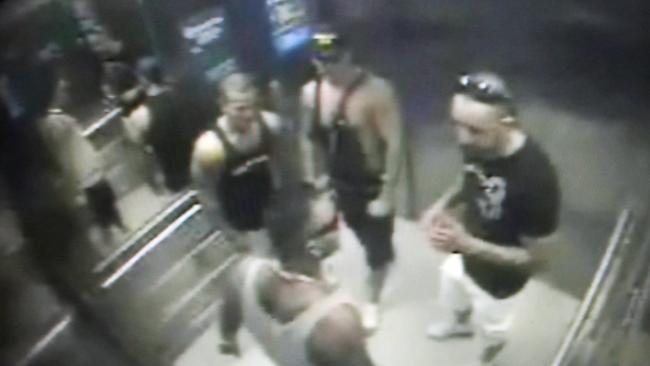
So it was, Hills wrote, “an unfortunate coincidence” when Angels president Darek Wainohu found himself seated uncomfortably close to the then-Comanchero president Mick Hawi and four gang underlings on a flight from Melbourne to Sydney.
Over the course of a tense light, during which Hawi reportedly walked up and down the plane, glaring at Wainohu, both men made arrangements for reinforcements from their respective gangs to meet them when the plane landed at Sydney Airport.
Seven members of each club rushed to the airport for the inevitable showdown.
After exiting their gate, Hawi approached Wainohu and the pair started arguing as the other gang members were approaching and worried members of the public gave the unfolding drama a wide berth. A brief bout of fighting broke out after Hawi threw a punch on Wainohu.
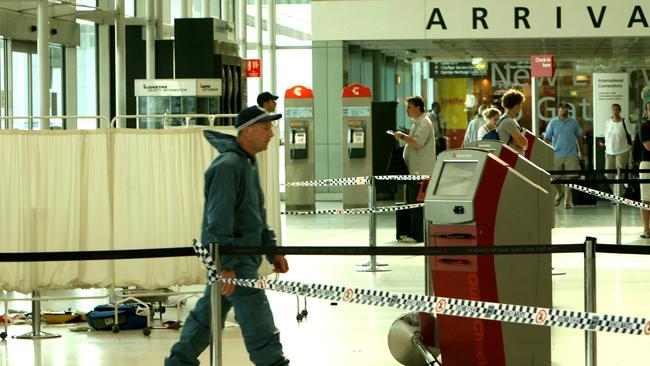
But eventually both groups left the secure area of the airport and headed into Terminal 3 where they were joined by more gang members and the most serious violence erupted.
During the confrontation, Anthony Zervas, brother of then-Hells Angels member Peter Zervas, rushed Hawi from behind and attempted to stab him in the side of the head with a pair of scissors.
Others involved in the melee hurled heavy bollards at each other.
And then, a member of the Comanchero, who a NSW Supreme Court Justice would later rule was not Hawi, rammed the base of a bollard into Zervas, killing him.
As Hills reported, just 36 seconds had elapsed between the time Zervas attempted to stab Hawi with the pair of scissors to the moment he died.
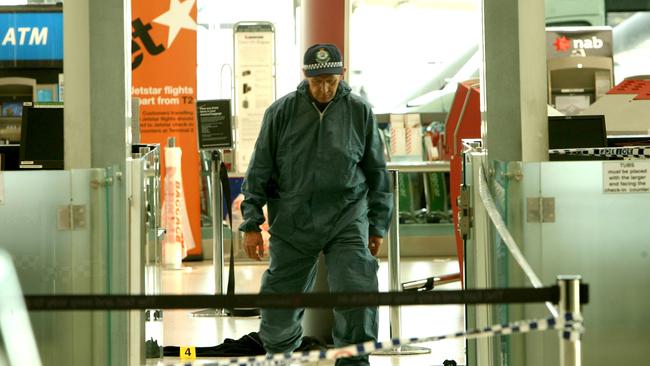
Police combed through 120 hours of footage captured during airport brawl that day and in April, 2009 Hawi handed himself in to police and was charged with affray.
He was later charged with Zervas’ murder in June, 2009 and found guilty of manslaughter in 2015 for his role in the brawl.
Hawi was shot dead in 2018 in an unrelated attack outside a gym in the Sydney suburb of Rockdale.
2013: BROADBEACH BRAWL
On September, 27, 2013, a “lynch mob” of Bandido bikies “roared” into the Gold Coast suburb of Broadbeach, sparking a wild brawl outside the Aura lounge bar.
The mob of about 50 Bandidos threatened to slit the throat of a bystander, and diners enjoying a night out on the popular dining strip fled in terror.
The pack also laid siege on the Southport police station, shouldercharging officers and demanding the release of their bikie brothers.
So what prompted the violence?
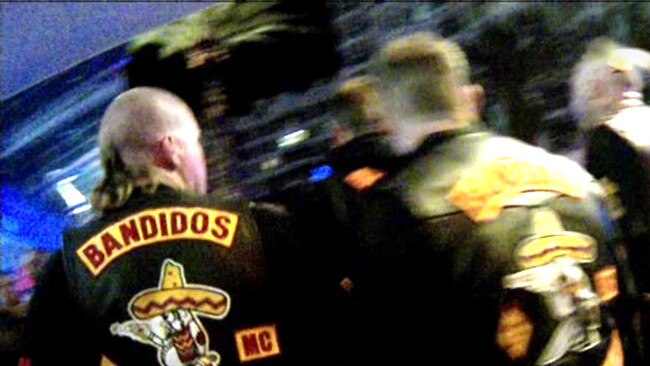
According to the Courier Mail in 2013, bikie sources at the time said they believed the brawl may have been triggered by a chain of events sparked by the defection of Bandidos national sergeant-of-arms John Fahey’s defection to rivals the Hells Angels.
A feared member of the Bandidos for 15 years, Fahey’s defection to the Hells Angels earlier in 2013 touched off a bitter falling out with former clubmates.
It was widely believed in the bikie underworld, the Courier reported, that the Bandidos had gone to Broadbeach looking for Fahey but found Jason Trouchet instead - an enemy of the brawl’s ringleader, Jacques Teamo.
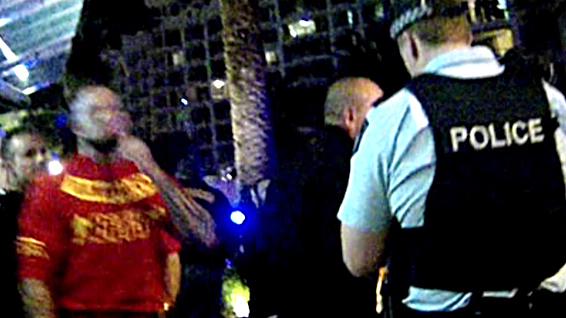
A former professional boxer, Trouchet had a history of bad blood with Teamo, but had never belonged to a bikie gang. Eighteen self-proclaimed ex-bikies faced charges including riot, affray, public nuisance, assault and obstructing police.
Sentencing those involved in August, 2015, Brisbane magistrate Michael Quinn said the brawl was a dangerous and unacceptable show of gang force that had a “profound and lasting effect” on the Queensland community.
He said that, except for one police officer being “king hit” several times, the brawl was “bikie on bikie” and all those charged walked free, with Teamo receiving a four-month sentence, wholly suspended. The riot prompted Queensland authorities to introduce Australia’s toughest anti-bikie laws at that time.
More Coverage
Originally published as Bikies Inc Podcast: Old wounds, Australia’s bloodiest bikie battles



